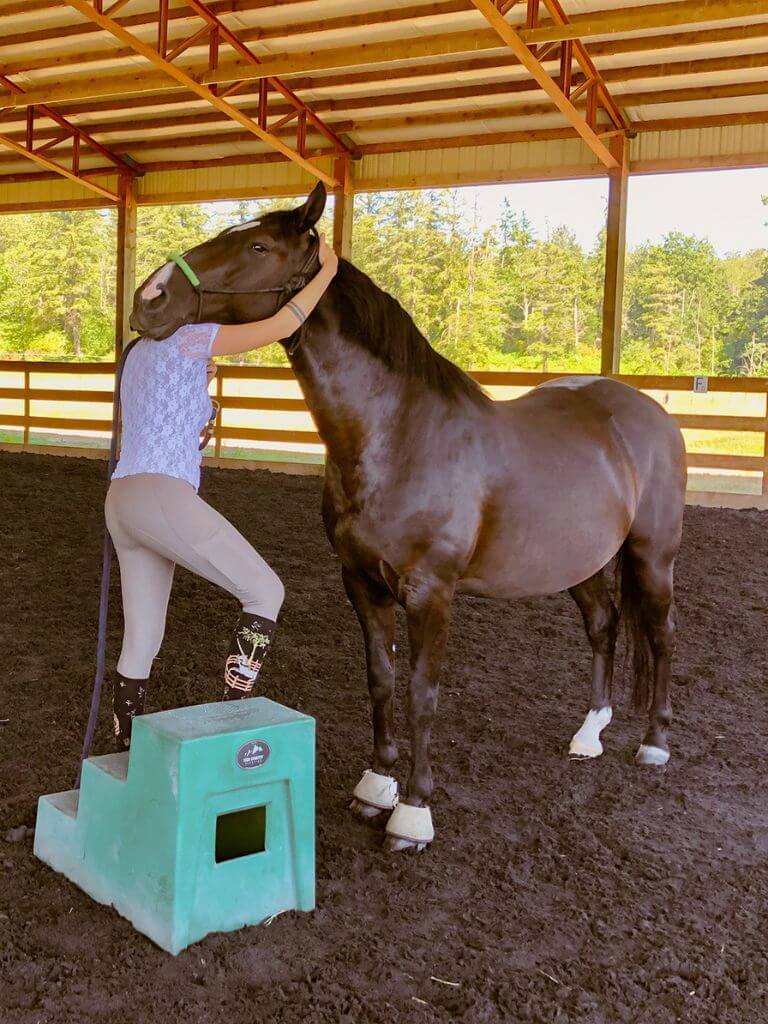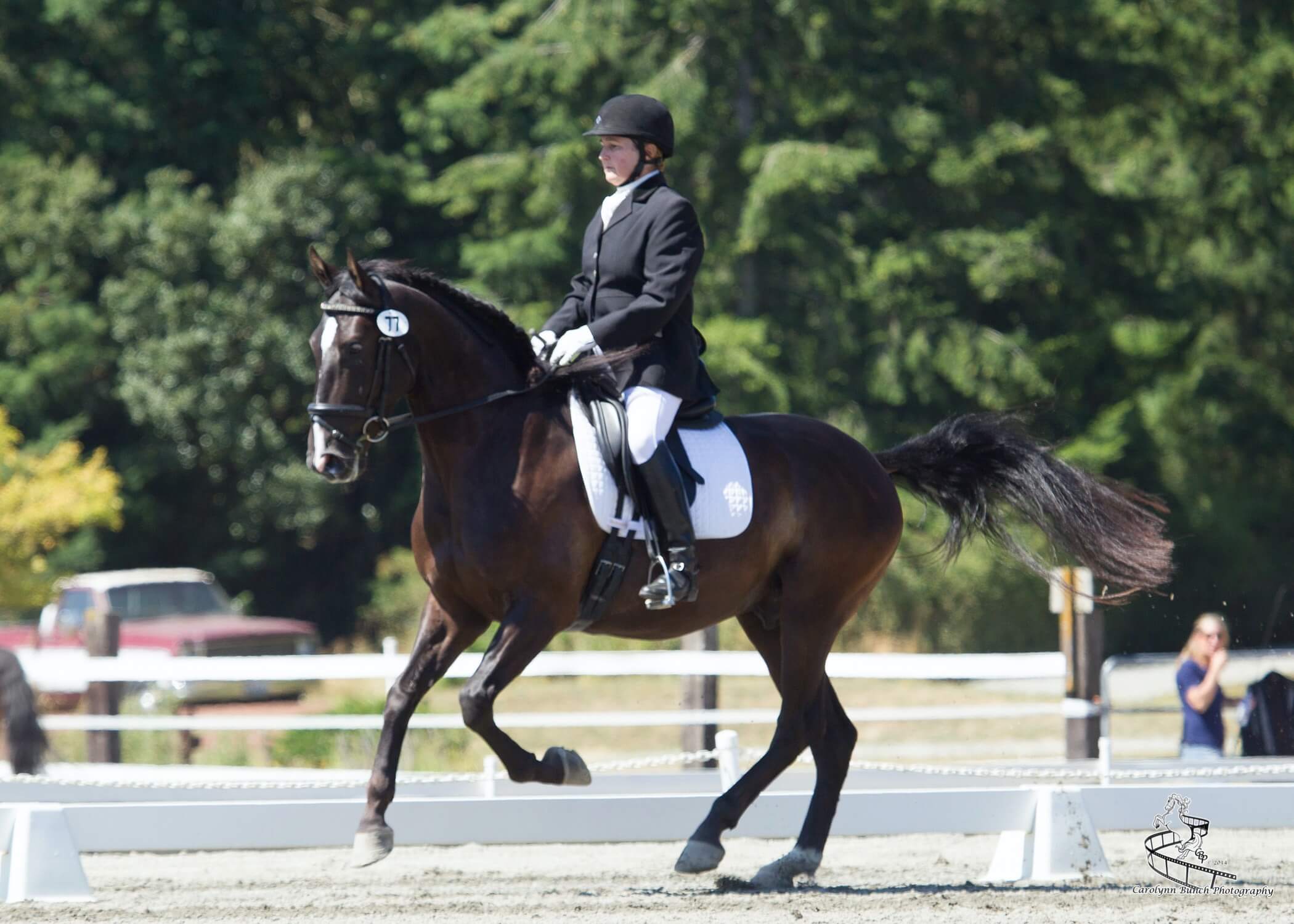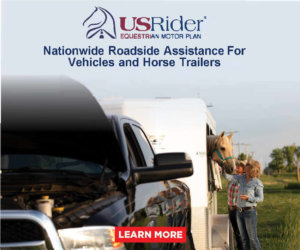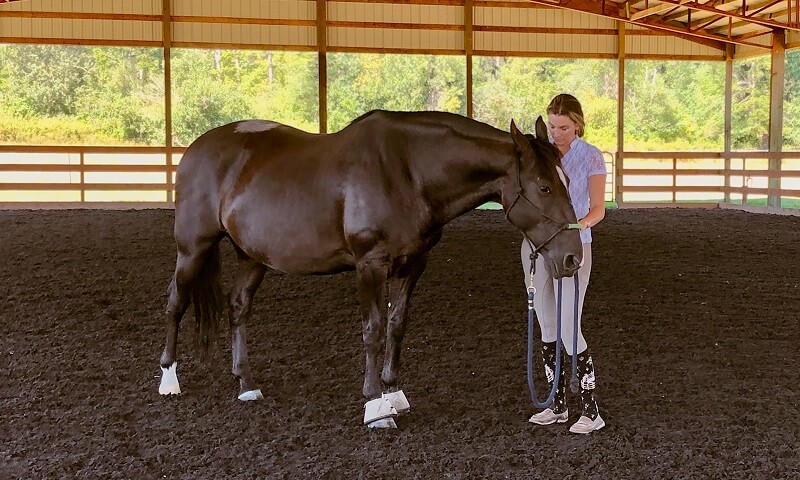An Introduction for Horse Owners
About five years ago I was experiencing some knee pain. It hurt to push the wheelbarrow, walk up and down stairs, and worst—it interfered with my ability to ride well. After a few months of hobbling around, I went to the doctor. He examined and palpated my knee and the surrounding muscles and noted that I had heat and swelling in the joint; he suggested an MRI, or at least an X-Ray.
I’m self-employed and my meager health insurance wouldn’t pay for those tests, so I decided to go home and continue to do what I’d been doing: ice, heat, and grit my teeth. But as I walked to my car from the doctor’s office, I noticed my knee wasn’t hurting as much and over a few days the pain went away and has never returned. The next time I saw my doctor I told him he’d healed me with a combination of his touch and his kind heart. He laughed it off, but multiple scientific studies show that I might not have been too far off with this idea. Touch has been shown to relieve pain and promote healing caused by multiple problems.
So, what does this have to do with horses? Horse people sometimes become discouraged when we know our horses are in pain, but we can’t find ways to help them through traditional medicine. Perhaps the horse is lame, but the veterinarian can’t find anything to treat. Or maybe the horse just resists things like mounting, canter departs, or going downhill; or maybe they’re unusually spooky or won’t go forward. This is when many of us consider bodywork for our horses in one (or more) of its many forms. The results are often positive.
With many varieties of bodywork available to horse owners, it’s worth knowing what you’re getting when you hire a therapist. You might even want to try more than one method. In many states, such as Washington, animal bodywork therapists must be certified. Know your state’s requirements.
Many therapists use a combination of the following methods:
Massage – Massage therapists use techniques that manipulate muscles through stroking, pounding, kneading, etc., to improve blood flow, increase oxygen levels, and remove lactic acid or other waste in the muscles.

Structural Integration – Based on the work of Dr. Ida P. Rolf, structural integration is sometimes referred to as Rolfing®. Structural Integration focuses on the connective tissue, or fascia, found throughout the body. Fascia surrounds and connects muscles, blood vessels, organs, and even nerves. It connects much of the body together, so affecting fascia in the neck may help to relieve pain in the back or shoulders.
The Masterson Method® was developed by Jim Masterson who has cared for top equine athletes throughout the industry including the U.S. Endurance Team. This therapy uses a very light touch and focuses mostly on the nervous system and releasing pain and tension stored in horses’ bodies. The therapist focuses on the horse’s reaction, staying within a relaxed state. There are free YouTube videos and paid seminars available to those who want to learn this more about this method. Visit mastersonmethod.com to learn more.
Chiropractic – Most people are familiar with chiropractic, which involves identifying any misalignments in the horse’s bones and joints. Chiropractors use manual manipulations to bring these structures back into their correct alignment. Chiropractors often give owners exercises to help keep things “lined up” after they leave.
Tellington TTouch® – Linda Tellington Jones has been helping people with their horse’s physical and mental issues for decades. Her methods involve gentle circles done with the fingertips or palms over very specific body parts. From her website: “The circular TTouches can reduce fear and pain, enhance cellular function and communication, and support the healing potential of the body.” Tellington-Jones teaches clinics, has written books, and offers much information on her website so owners can learn to care for their horses themselves using her methods. Her website has good descriptions of how to do the TTouch®. Visit ttouch.com for more information.
Regardless of the method of bodywork you choose, your horse will tell you if it’s working. Sometimes, in the case of horses who are in a lot of pain, you’ll witness resistance from your horse while a body worker is doing her job, but it shouldn’t be extreme. There should come some release of tension during the session. Be present and watchful during the process—sometimes your horse’s relief will be beautiful to see.
Most of these methods need to be done repeatedly to be effective. Be prepared to follow-up diligently with exercises yourself or to have the body worker out on a regular schedule.
See this article in the September/October 2022 online edition:
Sep/Oct 2022

Kim Roe grew up riding on the family ranch and competed in Western rail classes, trail horse, reining, working cow, and hunter/jumper. She trained her first horse for money at 12 years old, starting a pony for a neighbor.
Kim has been a professional dressage instructor in Washington state for over 30 years, training hundreds of horses and students through the levels. In recent years Kim has become involved in Working Equitation and is a small ‘r’ Working Equitation judge with WE United.
Kim is the editor of the Northwest Horse Source Magazine, and also a writer, photographer, and poet. She owns and manages Blue Gate Farm in Deming, Washington where she continues to be passionate about helping horses and riders in many disciplines.






